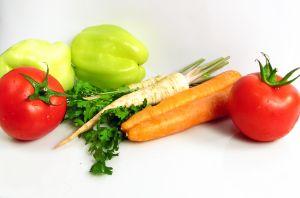
Consuming the Healthiest Fruits and Vegetables
In order to consume the healthiest fruits and vegetables as a part of your daily diet, you'll want to take in a variety of colors and types. With hundreds of valuable nutrients uncovered throughout nutrition science research (and with hundreds more on the rise), people can see that a combination of fruits and vegetables works to support overall wellbeing.
Think Color Variety
Eating an assortment of colored fruits and vegetables ensures you are taking in the incredibly diverse benefits they offer. Different colored produce provides a range of phytonutrients, antioxidants, vitamins, and minerals which all work together to promote great health. Listed below are a few colors you may consider.
Rejoice in Red
Fruits and vegetables that are naturally red in color provided an abundance of wonderful vitamins and minerals. The red pigment that makes them so beautiful is called lycopene. This pigment has antioxidant properties and helps fight off free radicals and cancer-causing chemicals in the body. Try including some red bell peppers and tomatoes in your next salad. Enjoy some fresh grapefruit with your breakfast. There are plenty of lovely red fruits and vegetables, so take your pick and enjoy!
Green Glory
Green is a fantastic color to eat every day. Avocados, spinach, romaine lettuce, kale, bok choi, broccoli - the list goes on and on. Dr. David Heber, author of What Color Is Your Diet? claims some of these green gifts from Mother Nature contain nutrients such as sulforaphane and isothiocyanate which are associated with destroying cancer-causing agents. Additionally, green leafy vegetables are attributed with good levels of iron. You're bound to get a healthy dosage of phytonutrients, vitamins, minerals, and antioxidants by including some green in your diet.
Yummy Yellow and Orange
When you go for orange and yellow vegetables and fruits, you're going for natural sources of vitamin C and vitamin A. Pumpkin squash, mangoes, oranges, nectarines, papayas, carrots, and many more all have naturally occurring goodies including compounds that are converted to vitamin A in the body.
Purple Is Superb

Grapes, figs, blueberries, raspberries, acai berries, eggplant, and other fruits and vegetables are wealthy in carotenes that are said to improve intracellular communication. Additionally, they are packed with the antioxidants and phytonutrients that battle free radicals within your system.
Pick a Range of Types
As you may have noticed, with color variety often comes type variety. The list of different types of fruits and vegetables seems endless, but here are a few just to give you some ideas:
- Tropical Fruits (i.e. bananas, coconuts)
- Citrus Fruits (i.e. tangerines, grapefruits)
- Melons (i.e. watermelon, honeydew)
- Berries (i.e. blueberries, blackberries)
- Leafy Vegetables (i.e. lettuce, spinach)
- Root Vegetables (i.e. beets, carrots)
- Inflorescent Vegetables (i.e. cauliflower, broccoli)
- Tuber Vegetables (i.e. sweet potato, jicama)
Homegrown and Organic Fruits and Vegetables
Some of the healthiest fruits and vegetables are grown right in your own backyard. Locally grown produce is said to have even greater amounts of originally occurring nutrients than shipped produce, which may lose up to half of these beneficial qualities on a journey lasting five to six days. If you have the chance, pay a visit to your local farmers market and pick out some organic treats to get the most health benefits.







